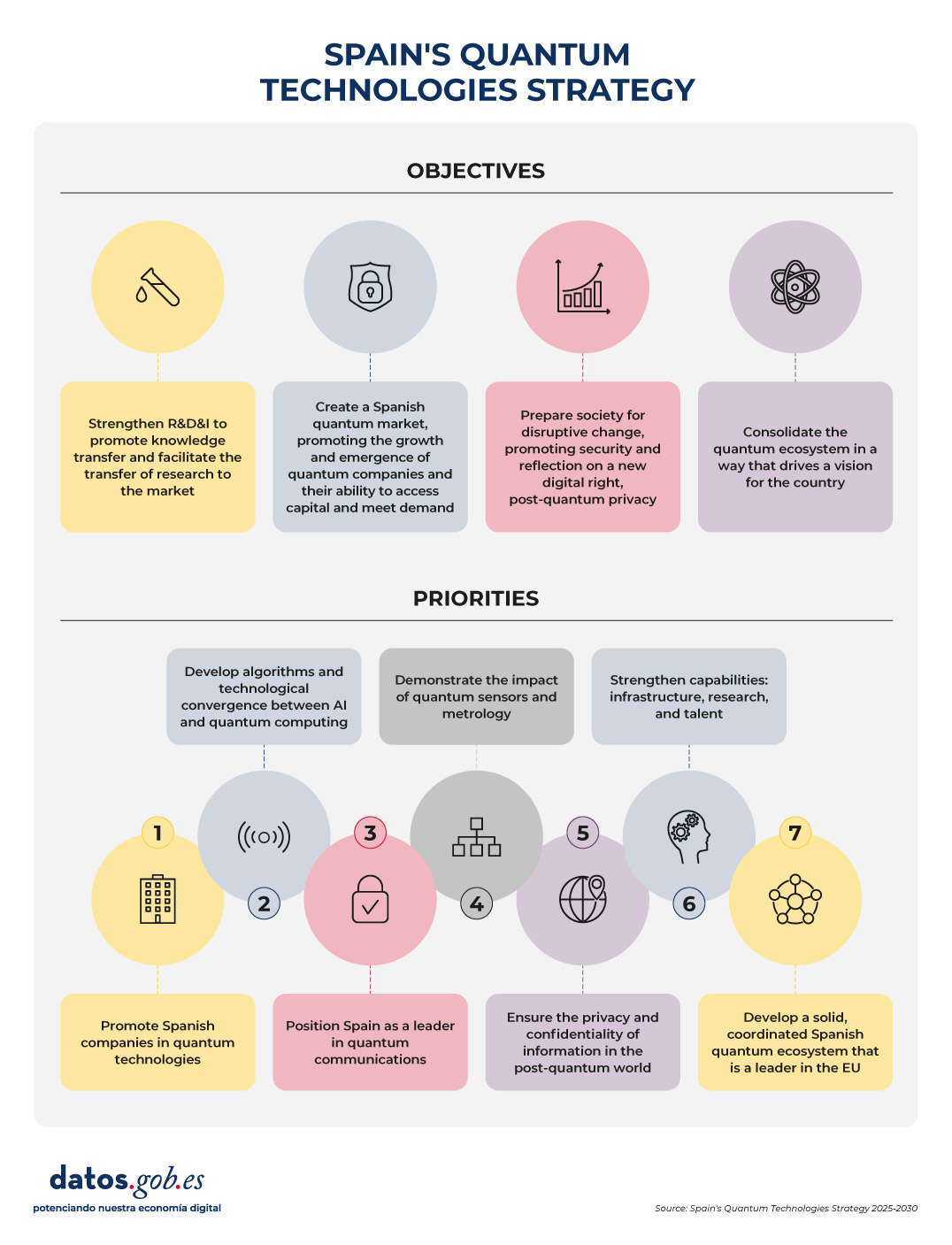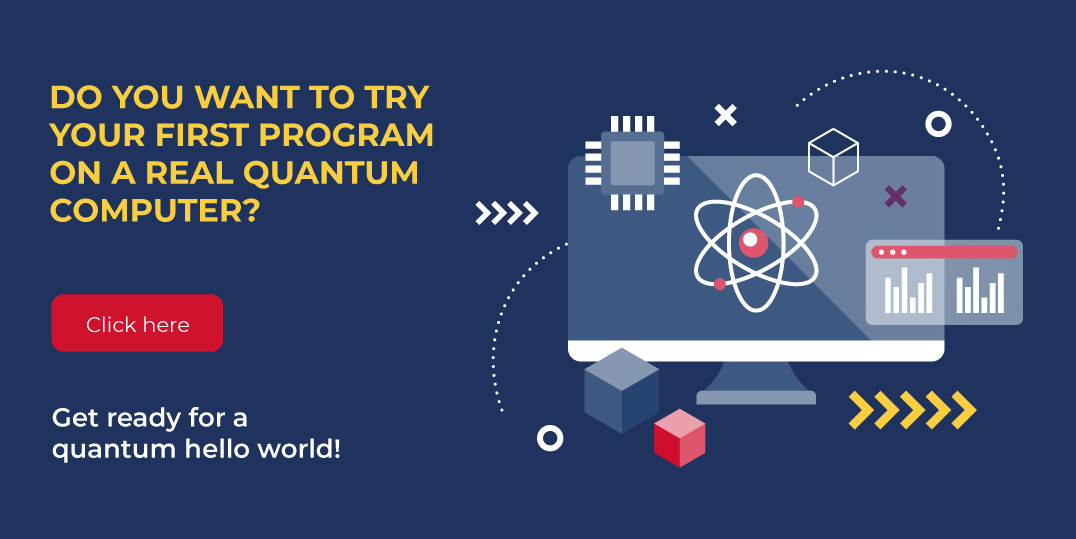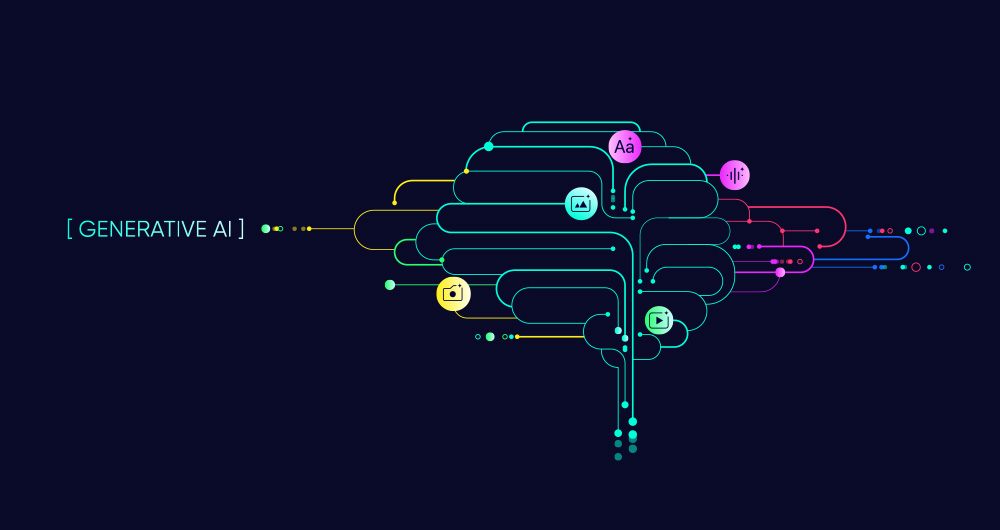
Quantum computing promises to solve problems in hours that would take millennia for the world's most powerful supercomputers. From designing new drugs to optimizing more sustainable energy grids, this technology will radically transform our ability to address humanity's most complex challenges. However, its true democratizing potential will only be realized through convergence with open data, allowing researchers, companies, and governments around the world to access both quantum computing power in the cloud and the public datasets needed to train and validate quantum algorithms.
Trying to explain quantum theory has always been a challenge, even for the most brilliant minds humanity has given in the last 2 centuries. The celebrated physicist Richard Feynman (1918-1988) put it with his trademark humor:
"There was a time when newspapers said that only twelve men understood the theory of relativity. I don't think it was ever like that [...] On the other hand, I think I can safely say that no one understands quantum mechanics."
And that was said by one of the most brilliant physicists of the twentieth century, Nobel Prize winner and one of the fathers of quantum electrodynamics. So great is the rarity of quantum behavior in the eyes of a human that, even Albert Einstein himself, in his now mythical phrase, said to Max Born, in a letter written to the German physicist in 1926, "God does not play dice with the universe" in reference to his disbelief about the probabilistic and non-deterministic properties attributed to quantum behavior. To which Niels Bohr - another titan of physics of the twentieth century - replied: "Einstein, stop telling God what to do."
Classical computing
If we want to understand why quantum mechanics proposes a revolution in computer science, we have to understand its fundamental differences from mechanics - and, therefore, - classical computing. Almost all of us have heard of bits of information at some point in our lives. Humans have developed a way of performing complex mathematical calculations by reducing all information to bits - the fundamental units of information with which a machine knows how to work -, which are the famous zeros and ones (0 and 1). With two simple values, we have been able to model our entire mathematical world. And why? Some will ask. Why base 2 and not 5 or 7? Well, in our classic physical world (in which we live day to day) differentiating between 0 and 1 is relatively simple; on and off, as in the case of an electrical switch, or north or south magnetization, in the case of a magnetic hard drive. For a binary world, we have developed an entire coding language based on two states: 0 and 1.
Quantum computing
In quantum computing, instead of bits, we use qubits. Qubits use several "strange" properties of quantum mechanics that allow them to represent infinite states at once between zero and one of the classic bits. To understand it, it's as if a bit could only represent an on or off state in a light bulb, while a qubit can represent all the light bulb's illumination intensities. This property is known as "quantum superposition" and allows a quantum computer to explore millions of possible solutions at the same time. But this is not all in quantum computing. If quantum superposition seems strange to you, wait until you see quantum entanglement. Thanks to this property, two "entangled" particles (or two qubits) are connected "at a distance" so that the state of one determines the state of the other. So, with these two properties we have information qubits, which can represent infinite states and are connected to each other. This system potentially has an exponentially greater computing capacity than our computers based on classical computing.
Two application cases of quantum computing
1. Drug discovery and personalized medicine. Quantum computers can simulate complex molecular interactions that are impossible to compute with classical computing. For example, protein folding – fundamental to understanding diseases such as Alzheimer's – requires analyzing trillions of possible configurations. A quantum computer could shave years of research to weeks, speeding up the development of new drugs and personalized treatments based on each patient's genetic profile.
2. Logistics optimization and climate change. Companies like Volkswagen already use quantum computing to optimize traffic routes in real time. On a larger scale, these systems could revolutionize the energy management of entire cities, optimizing smart grids that integrate renewables efficiently, or design new materials for CO2 capture that help combat climate change.
A good read recommended for a complete review of quantum computing here.
The role of open data (and computing resources)
The democratization of access to quantum computing will depend crucially on two pillars: open computing resources and quality public datasets. This combination is creating an ecosystem where quantum innovation no longer requires millions of dollars in infrastructure. Here are some options available for each of these pillars.
- Free access to real quantum hardware:
- IBM Quantum Platform: Provides free monthly access to quantum systems of more than 100 qubits for anyone in the world. With more than 400,000 registered users who have generated more than 2,800 scientific publications, it demonstrates how open access accelerates research. Any researcher can sign up for the platform and start experimenting in minutes.
- Open Quantum Institute (OQI): launched at CERN (the European Organization for Nuclear Research) in 2024, it goes further, providing not only access to quantum computing but also mentoring and educational resources for underserved regions. Its hackathon program in 2025 includes events in Lebanon, the United Arab Emirates, and other countries, specifically designed to mitigate the quantum digital divide.
- Public datasets for the development of quantum algorithms:
- QDataSet: Offers 52 public datasets with simulations of one- and two-qubit quantum systems, freely available for training quantum machine learning (ML) algorithms. Researchers without resources to generate their own simulation data can access its repository on GitHub and start developing algorithms immediately.
- ClimSim: This is a public climate-related modeling dataset that is already being used to demonstrate the first quantum ML algorithms applied to climate change. It allows any team, regardless of their budget, to work on real climate problems using quantum computing.
- PennyLane Datasets: is an open collection of molecules, quantum circuits, and physical systems that allows pharmaceutical startups without resources to perform expensive simulations and experiment with quantum-assisted drug discovery.
Real cases of inclusive innovation
The possibilities offered by the use of open data to quantum computing have been evident in various use cases, the result of specific research and calls for grants, such as:
- The Government of Canada launched in 2022 "Quantum Computing for Climate", a specific call for SMEs and startups to develop quantum applications using public climate data, demonstrating how governments can catalyze innovation by providing both data and financing for its use.
- The UK Quantum Catalyst Fund (£15 million) funds projects that combine quantum computing with public data from the UK's National Health Service (NHS) for problems such as optimising energy grids and medical diagnostics, creating solutions of public interest verifiable by the scientific community.
- The Open Quantum Institute's (OQI) 2024 report details 10 use cases for the UN Sustainable Development Goals developed collaboratively by experts from 22 countries, where the results and methodologies are publicly accessible, allowing any institution to replicate or improve these works).
- Red.es has opened an expression of interest aimed at agents in the quantum technologies ecosystem to collect ideas, proposals and needs that contribute to the design of the future lines of action of the National Strategy for Quantum Technologies 2025–2030, financed with 40 million euros from the ERDF Funds.
Current State of Quantum Computing
We are in the NISQ (Noisy Intermediate-Scale Quantum) era, a term coined by physicist John Preskill in 2018, which describes quantum computers with 50-100 physical qubits. These systems are powerful enough to perform certain calculations beyond the classical capabilities, but they suffer from incoherence, frequent errors that make them unviable in market applications.
IBM, Google, and startups like IonQ offer cloud access to their quantum systems, with IBM providing public access through the IBM Quantum Platform since 2016, being one of the first publicly accessible quantum processors connected to the cloud.
In 2019, Google achieved "quantum supremacy" with its 53-qubit Sycamore processor, which performed a calculation in about 200 seconds that would take about 10,000 years to a state-of-the-art classical supercomputer.
The latest independent analyses suggest that practical quantum applications may emerge around 2035-2040, assuming continued exponential growth in quantum hardware capabilities. IBM has committed to delivering a large-scale fault-tolerant quantum computer, IBM Quantum Starling, by 2029, with the goal of running quantum circuits comprising 100 million quantum gates on 200 logical qubits.
The Global Race for Quantum Leadership
International competition for dominance in quantum technologies has triggered an unprecedented wave of investment. According to McKinsey, until 2022 the officially recognized level of public investment in China (15,300 million dollars) exceeds that of the European Union (7,200 million dollars), the United States 1,900 million dollars) and Japan (1,800 million dollars) combined.
Domestically, the UK has committed £2.5 billion over ten years to its National Quantum Strategy to make the country a global hub for quantum computing, and Germany has made one of the largest strategic investments in quantum computing, allocating €3 billion under its economic stimulus plan.
Investment in the first quarter of 2025 shows explosive growth: quantum computing companies raised more than $1.25 billion, more than double the previous year, an increase of 128%, reflecting a growing confidence that this technology is approaching commercial relevance.
To end the section, a fantastic short interview with Ignacio Cirac, one of the "Spanish fathers" of quantum computing.
Quantum Spain Initiative
In the case of Spain, 60 million euros have been invested in Quantum Spain, coordinated by the Barcelona Supercomputing Center. The project includes:
- Installation of the first quantum computer in southern Europe.
- Network of 25 research nodes distributed throughout the country.
- Training of quantum talent in Spanish universities.
- Collaboration with the business sector for real-world use cases.
This initiative positions Spain as a quantum hub in southern Europe, crucial for not being technologically dependent on other powers.
In addition, Spain's Quantum Technologies Strategy has recently been presented with an investment of 800 million euros. This strategy is structured into 4 strategic objectives and 7 priority actions.
Strategic objectives:
- Strengthen R+D+I to promote the transfer of knowledge and facilitate research reaching the market.
- To create a Spanish quantum market, promoting the growth and emergence of quantum companies and their ability to access capital and meet demand.
- Prepare society for disruptive change, promoting security and reflection on a new digital right, post-quantum privacy.
- Consolidate the quantum ecosystem in a way that drives a vision of the country.
Priority actions:
- Priority 1: To promote Spanish companies in quantum technologies.
- Priority 2: Develop algorithms and technological convergence between AI and Quantum.
- Priority 3: Position Spain as a benchmark in quantum communications.
- Priority 4: Demonstrate the impact of quantum sensing and metrology.
- Priority 5: Ensure the privacy and confidentiality of information in the post-quantum world.
- Priority 6: Strengthening capacities: infrastructure, research and talent.
- Priority 7: Develop a solid, coordinated and leading Spanish quantum ecosystem in the EU.

In short, quantum computing and open data represent a major technological evolution that affects the way we generate and apply knowledge. If we can build a truly inclusive ecosystem—where access to quantum hardware, public datasets, and specialized training is within anyone's reach—we will open the door to a new era of collaborative innovation with a major global impact.
Content created by Alejandro Alija, expert in Digital Transformation and Innovation. The content and views expressed in this publication are the sole responsibility of the author.



